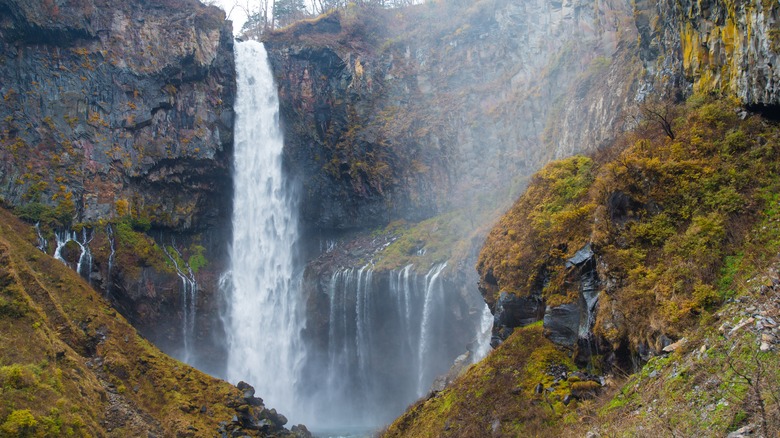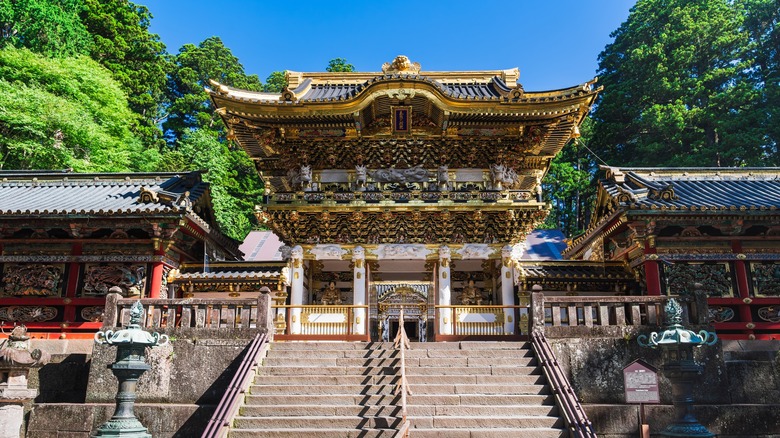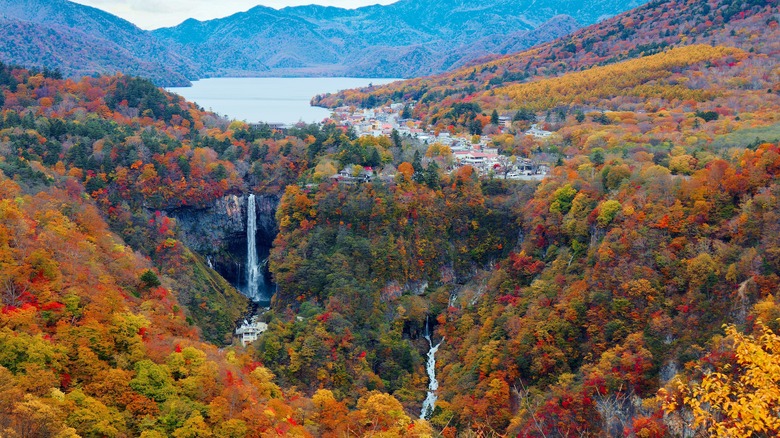This Underrated City Is The Best Day Trip From Tokyo For Waterfall Loving Hikers
When you've seen enough of Tokyo and are ready to venture outward to other unmissable tourist destinations in Japan, you don't have to go far to find scenic natural beauty. Even within the prefectural limits of Tokyo Metropolis, there are nature spots like Okutama or Mount Takao, where you'll find camping and hiking opportunities. The Greater Tokyo Area holds the town of Hakone, where you can take a break from Japan's busy cities in a beautiful destination outdoors. About three hours from Tokyo by train is the forest shrine and waterfall destination of Nikko, another fantastic place for a day trip or a one-night stay.
Nikko is the name of both a small city and an adjacent national park. The former and part of the latter are located in Tochigi, one of several neighboring prefectures that make up the National Capital Region in and around Tokyo. Like Hakone, Nikko has vibrant fall colors and sightseeing boats that tour a shimmering volcanic lake, but in this case, it's Japan's highest natural lake.
Nicknamed Satsu-no-umi, or the "Sea of Happiness" in Japanese, Lake Chuzenji also feeds Kegon Falls, a picturesque waterfall that rises to a height of over 300 feet. It's not the only waterfall hikers will encounter in the Nikko area, which is most famous for Tōshōgū Shrine, the highly decorative centerpiece of a UNESCO World Heritage Site. The misty, two-step Kirifuri Falls is nearby, but before or after you go chasing waterfalls, you'll want to cross this important shrine off your Japan bucket list.
Toshogu Shrine is your gateway to Nikko
Nikko is north of Tokyo, and if you're coming from the capital, you can reach it by bullet train or limited express from Marunouchi or Asakusa. Budget-minded Tokyo visitors who book a stay in these two districts have the option of taking the JR Tōhoku Shinkansen from Tokyo Station or boarding the Tobu Skytree Line in its terminal near Sensō-ji Temple. The latter offers direct service in some cases, but otherwise, you'll need to change trains once before you arrive at Nikko Station. Before visiting the lake and waterfalls, it might be best for day-trippers to take the World Heritage loop bus to Tōshōgū Shrine, as you'll likely be tired out and burning daylight by the time you return.
The shrine is dedicated to the renowned leader, Tokugawa Ieyasu, who founded the Tokugawa shogunate, the military government that ruled Japan for over two and a half centuries. Its ornate, gold-leaf architecture, typified by the lavish Yomeimon Gate, combines Buddhist and Shinto design elements. This is something of a rarity in modern Japan, where cultural customs remain syncretic, but temples and shrines keep the two religions disentangled architecturally.
You won't usually see a five-story Buddhist pagoda like the one here at a Shinto shrine. Speaking of seeing things, the old maxim, "See no evil, hear no evil, speak no evil," originates from a famed wood carving of three wise monkeys at Tōshōgū Shrine. Keep your eyes peeled for noteworthy carvings of a sleeping cat and "imagined elephants" before you ascend the steps to Ieyasu's mausoleum.
Lake Chuzenji, Kegon Falls, and more
On the way back to Nikko Station, you can stop off and see the lovely vermillion arch of Shinkyō Bridge, spanning the Daiya River. The bridge's name marks it as sacred, and you have to pay for the privilege to cross it. Once you reach the station, it's another 50 minutes by bus to the Lake Chuzenji area. Chuzenji Onsen is a hot spring town where you can stay for the night if one day in Nikko isn't enough. This is where you can take a sightseeing boat across the lake and hike all or part of the 15-mile trail that encircles it and its connecting piers.
The bus terminal will also put you within walking distance of Kegon Falls. The Kegon Falls Elevator takes you down over 325 feet to a paid observation platform, where you'll have the best view of the towering waterfall. In addition, there's a free upper platform, or you can ride the ropeway up to the Akechidaira Observatory for a view of both the waterfall and Lake Chuzenji. It also yields views of the foliage along the winding road called Irohazaka.
Shaped almost like a dragon's head (hence its Japanese name), Ryuzu Falls is another waterfall around the lake that is particularly stunning when the autumn leaves begin to show. From the summit of Mount Hangetsuyama, you'll get the full panorama of Lake Chuzenji and the volcano that formed it, Mount Nantai. It's a refreshing sight when you've gone from the shadow of the Tokyo Skytree and the hustle and bustle of a big-city tourist hub to a wide-open landscape of real trees and waterfalls.


